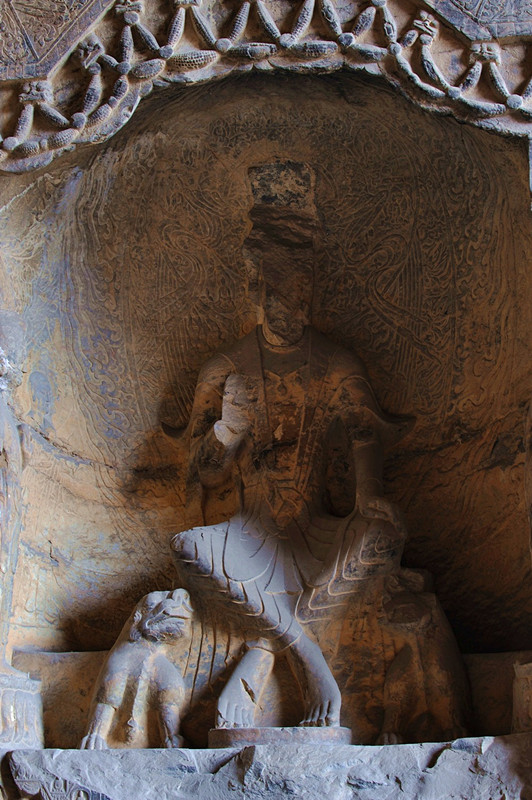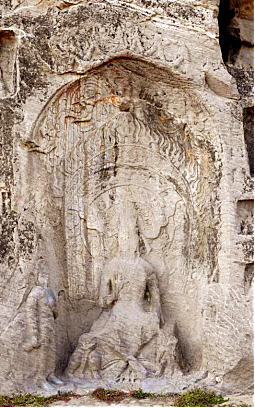ABCs of Longmen: The earliest cross-ankled Maitreya Buddha in Longmen
Updated: 2015-12-29
Buddha Maitreya enjoys high popularity among Buddhists in China. He is regarded as a Buddha of the Future to succeed Shakyamuni, living in the palace of Tuṣita. Maitreya is typically pictured as Buddha in a kāṣāya robe or a bodhisattva dressed in gorgeous jewels and garment. Statues of Maitreya would usually be standing or sitting (cross-legged, with legs down or cross-ankled).
The bodhisattva with a cross-ankled sitting pose is the most popular among His statues of the Wei, Jin, Southern and Northern Dynasties. It is the image when He preaches to celestials in palace of Tuṣita Heaven.
 |
|
The cross-ankled Maitreya statue in a niche of Guyang Cave [Photo / Longmen Grottoes on WeChat] |
Most of the cross-ankled Maitreya statues of the Northern Wei Dynasty (AD 386-534) are in Guyang Cave, Lotus Cave and Weizi Cave. However, research shows that the earliest niche with a cross-ankled Maitreya statue in Longmen is Niche 1136 near the Weizi Cave on West Hill.
 |
|
The cross-ankled Maitreya statue in Niche 1136 (dating back to the Northern Wei period) [Photo / Longmen Grottoes on WeChat] |
The cliff niche, 3 meters in height, 1.6 meters in width and 0.6 meters in depth has three statues in it. Maitreya statue is setting cross-ankled at the center on a square pedestal, wearing a high crown and a scarf that crosses at the chest. His left hand is resting on his left lap while the right hand is holding up to the chest. The round nimbus around His head has lotus images and patterns of setting Buddhas and gods. The mandorla behind is decorated with images of honeysuckle and flame, with performers carved outside and on the ceiling of the niche.
Flanked by his two acolytes,Maitreya also has two attendants of him standing beside. Both statues of the attendants weathered seriously but the figure of statue on the right (to the south) is still clear, with flame pattern in the peach-shaped nimbus, the left hand holding up to the chest and the right holding a bottle.
The niche was carved and decorated in a style that is frequently seen in early caves of Yungang Grottoes and the statues adopted the Gandhara art style.






